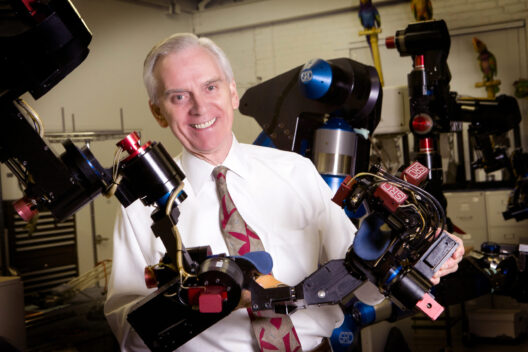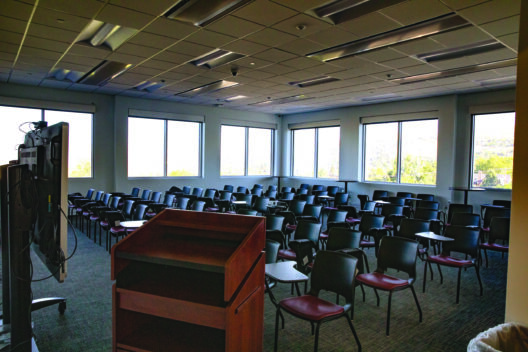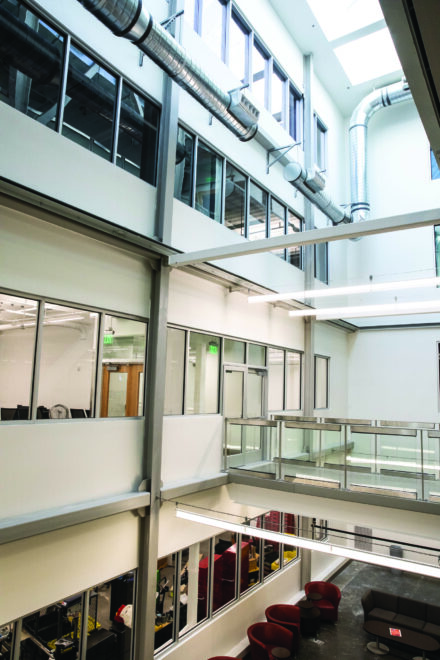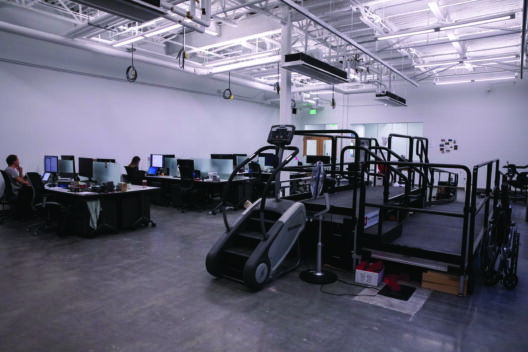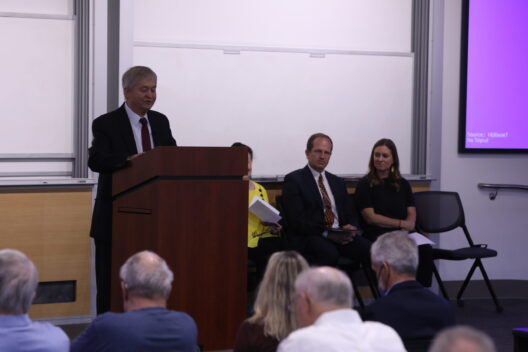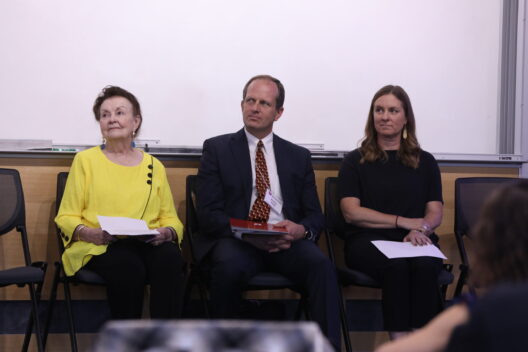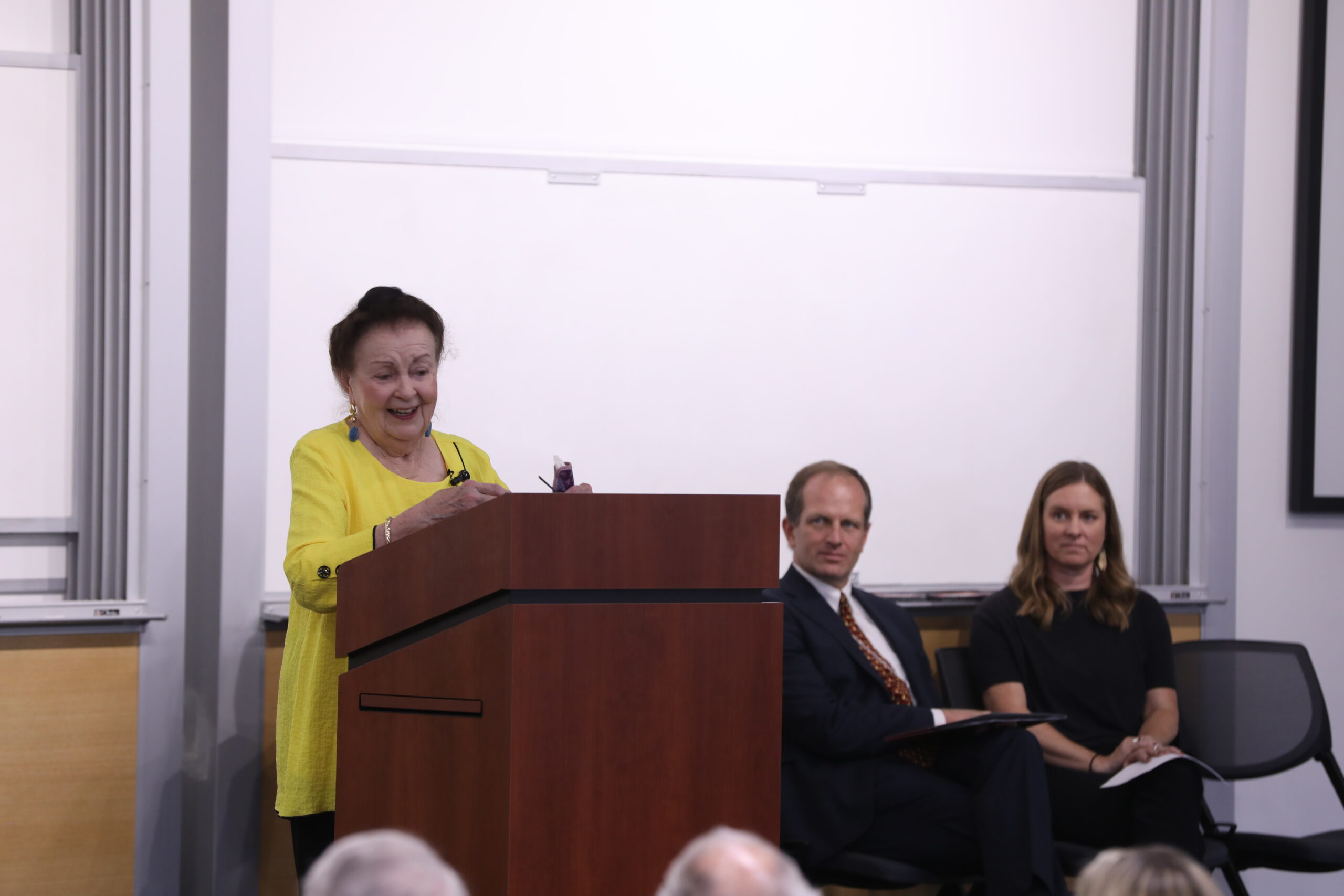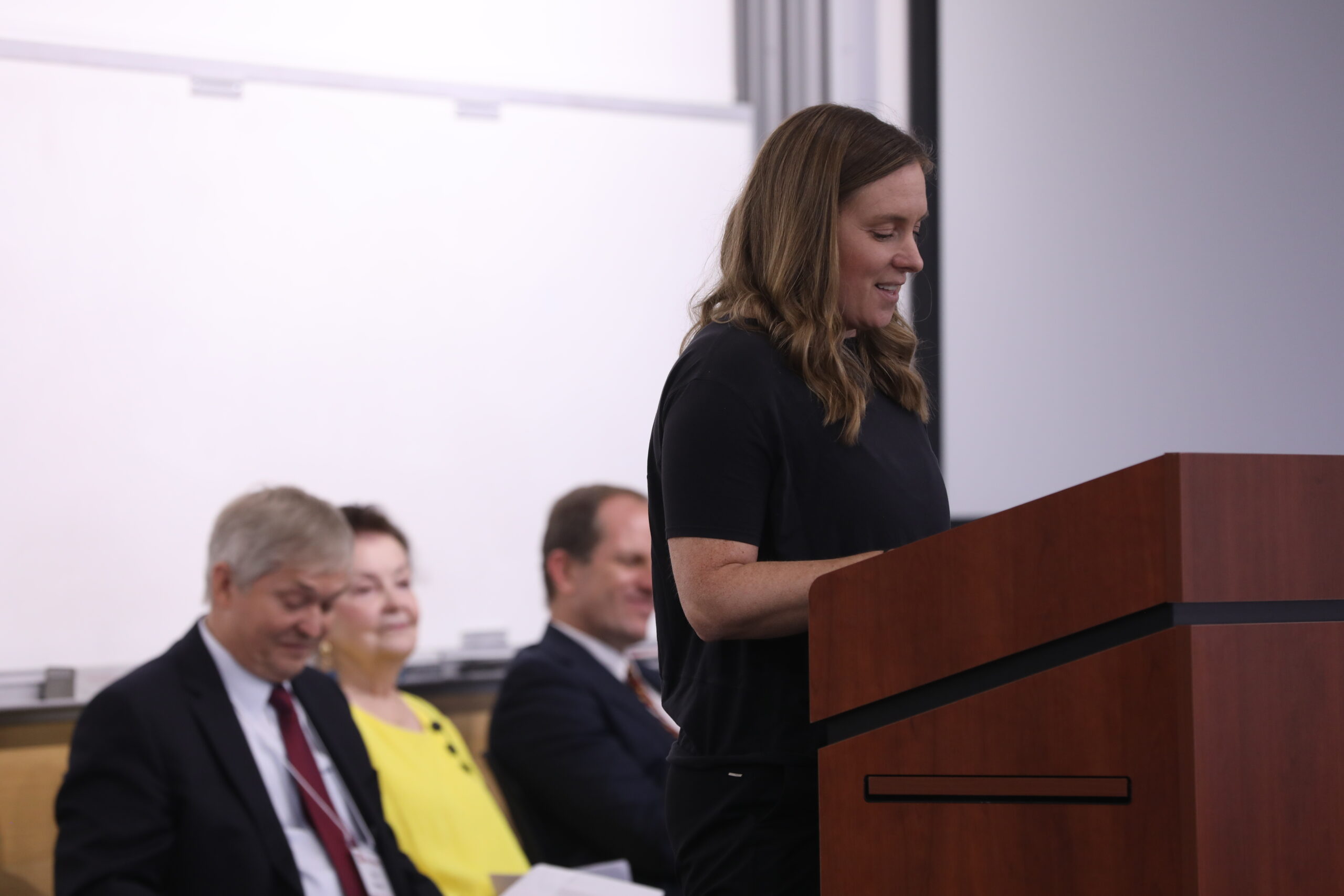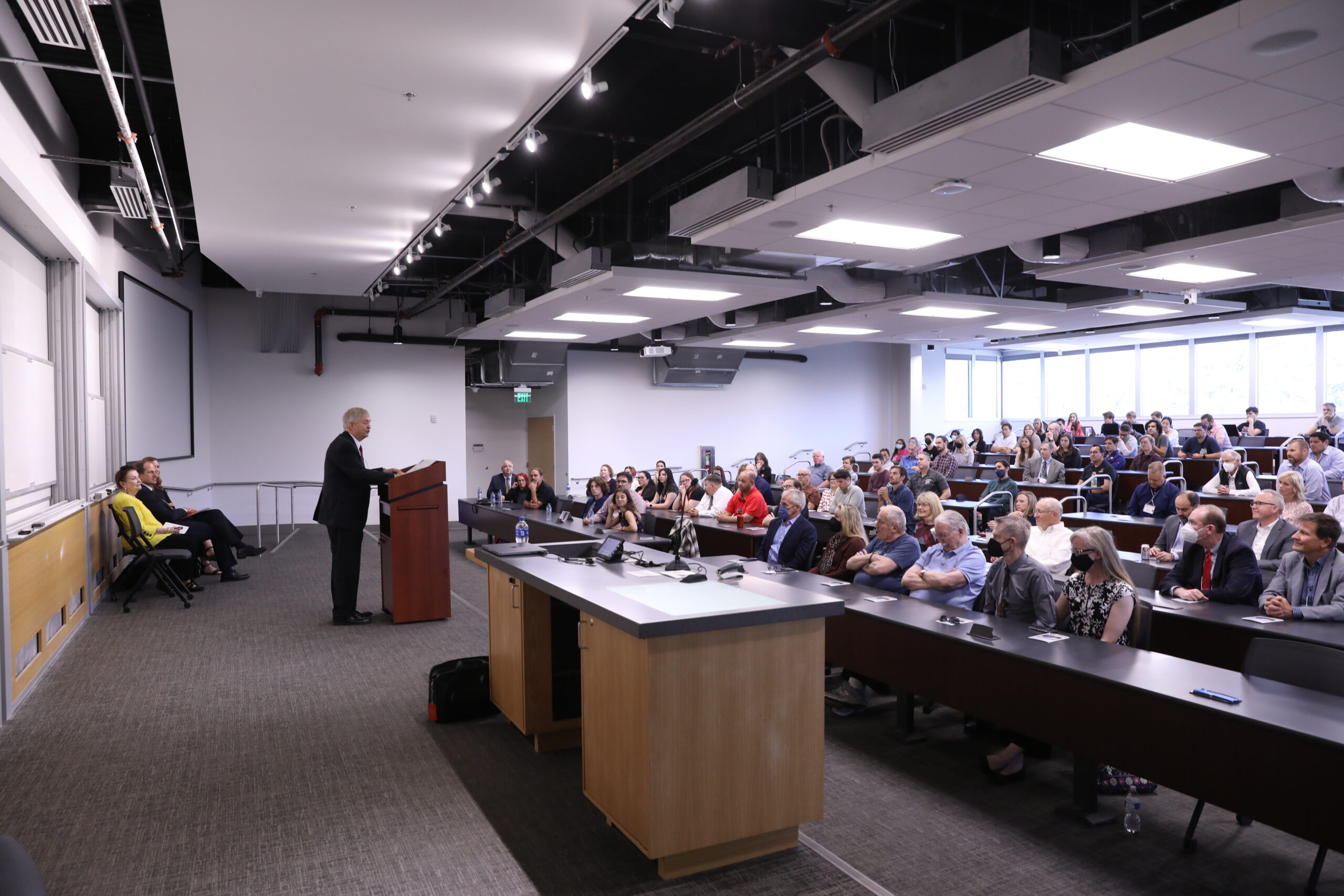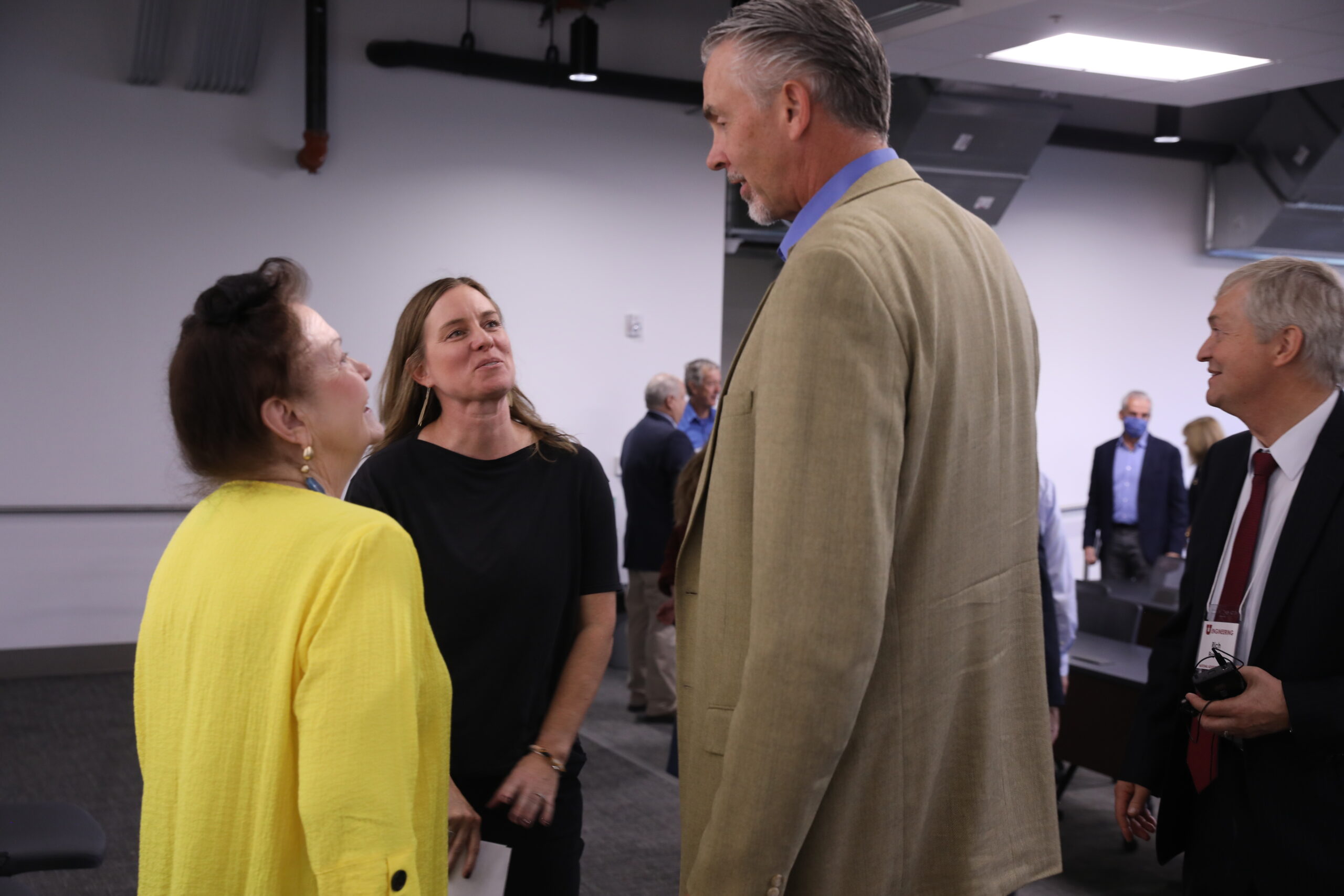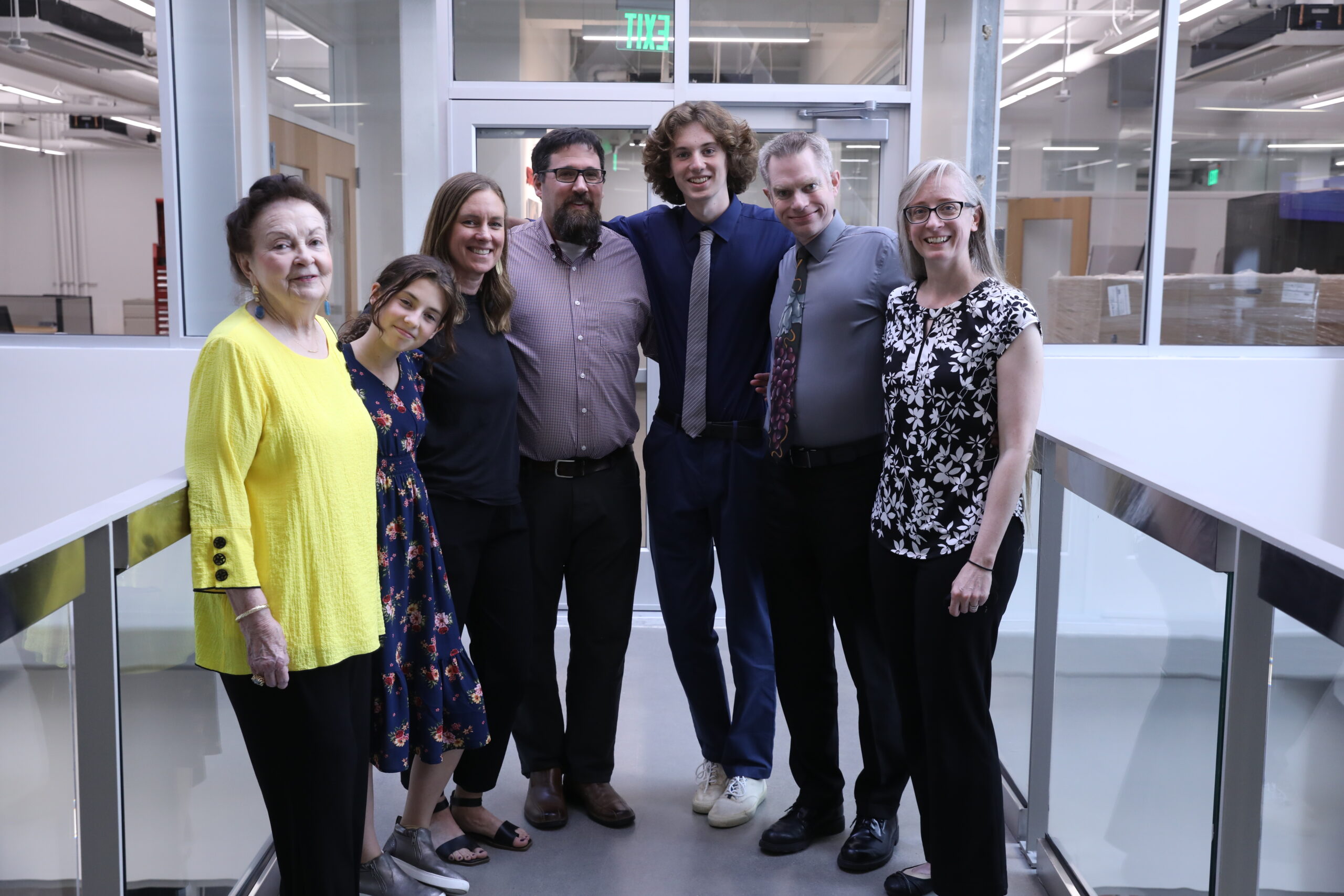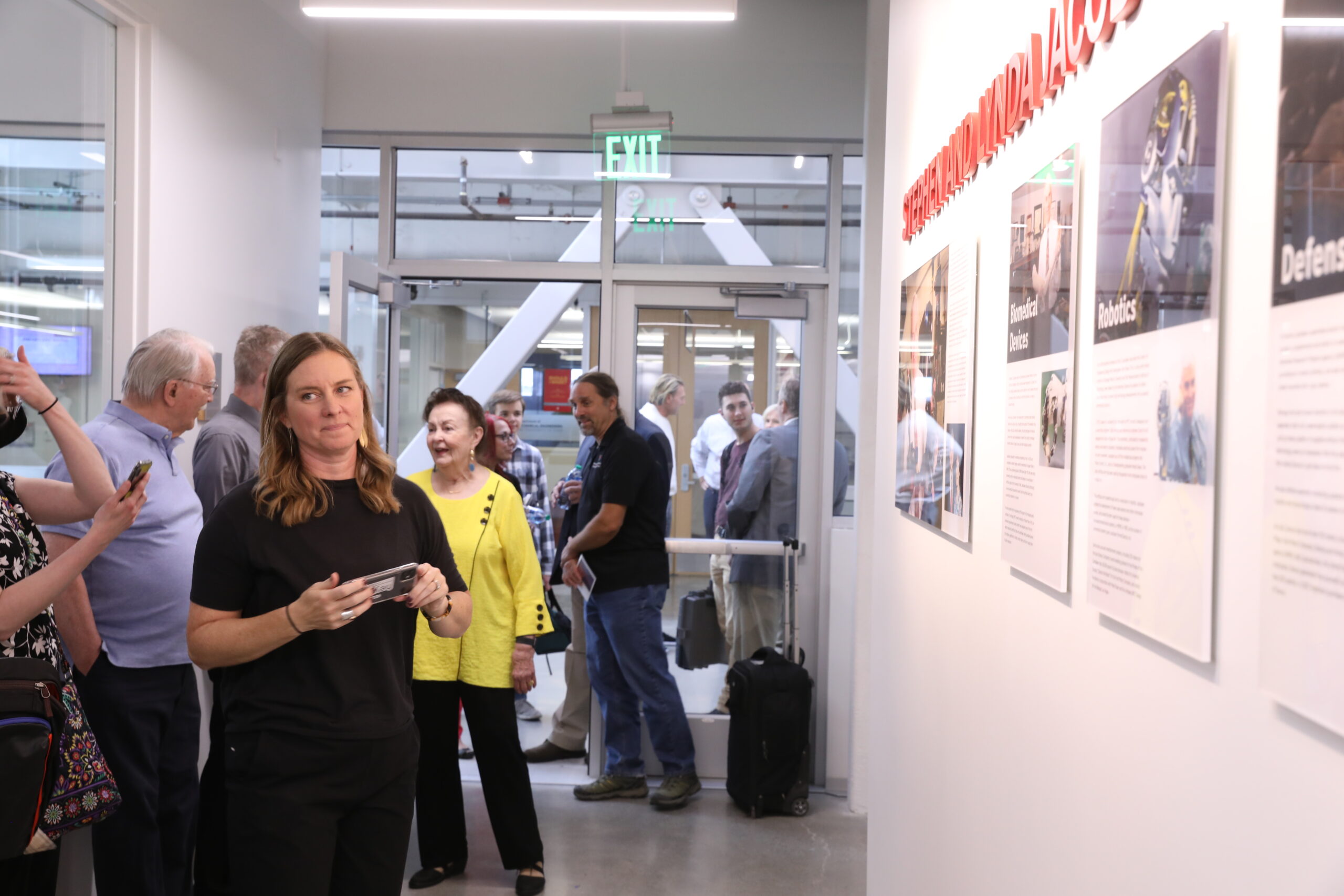Stephen C. Jacobsen was an engineer, roboticist and biomedical pioneer. A Distinguished Professor of Engineering at the University of Utah, he was at the forefront of robotic and biomedical device design. In honor of his legacy, the College of Engineering dedicated a new space in the Rio Tinto Kennecott Building to him and his wife.
A dedication ceremony Sept. 30 for the Stephen C. and Lynda M. Jacobsen Tower included members of Jacobsen’s family and remarks from his sister-in-law, Sharyn Rash, and his daughter Genevieve Jacobsen Boyles.
A pioneer of technology commercialization, Jacobsen was happiest working on research and development projects that were grounded in engineering, medical, and scientific principles, but generated products that could be used by people. His legacy includes an array of systems and products for national laboratories and for more than 200 governmental organizations and commercial clients worldwide.
Jacobsen was elected to the National Academy of Engineering, the Institute of Medicine and the National Academy of Orthotists and Prosthetists. He is credited with 170 technical publications, 276 technical invited presentations, more than 200 US patents, 123 foreign patents, and 50 trademarks. Jacobsen founded nine companies including Raytheon-Sarcos, Sarcos Research Corp., Motion Control, Inc., and Precision Vascular Systems, Inc.
“You didn’t need to spend much time with Steve to know that he was a genius,” College of Engineering Dean Richard B. Brown said during the ceremony. “Steve helped put the University of Utah on the map. That was certain true for the College of Engineering.”
Lynda (Lynn) Jacobsen graduated Summa Cum Laude from the University of Arizona and completed an MFA in Theater at the U. An accomplished pianist, she was passionate about arts and culture, and served on the Salt Lake Arts Council, The Utah Natural History Museum and Red Butte Garden boards.
Lynn actively supported Steve’s career. She knew many of his employees very well and was active in hosting events and dinners. She excelled at fostering relationships and connecting with people as she traveled with Steve all over the world
The Tower
In 2015, the College of Engineering turned the iconic, 1950’s era Kennecott Building into one of the most sustainable, energy-efficient buildings on campus. The renovated Rio Tinto Kennecott Building became the new home of the Mechanical Engineering Department. In the seven years since the project was completed, however, enrolled majors in mechanical engineering increased from 1,090 to 1,300, while the number of faculty rose from 38 to 50.
Anticipating this growth, the structural elements were built into the original project to support the addition. The four-story Jacobsen Tower is the final phase of a 10-year project, adding 22,600 square feet to the center of the structure for senior design, mechatronics courses, freshman design, and several new research labs and offices.
The Jacobsen Tower, with its hands-on student labs, is the new hub of the undergraduate experience. Through a sequence of project-based courses, mechanical engineering students work on real-world problems. In Mechanical Engineering, how students learn is just as important as what they learn.
For the faculty, the addition includes new labs that help turn ideas into reality including: Assistant Professor Tomasso Lenzi’s Bionic Engineering Lab, sponsored by Ottobock; and Associate Professor Bart Raeymaekers’ Nanotribology and Precision Engineering Laboratory.
Click below to see photos of the new space and the ceremony and a tribute video.
